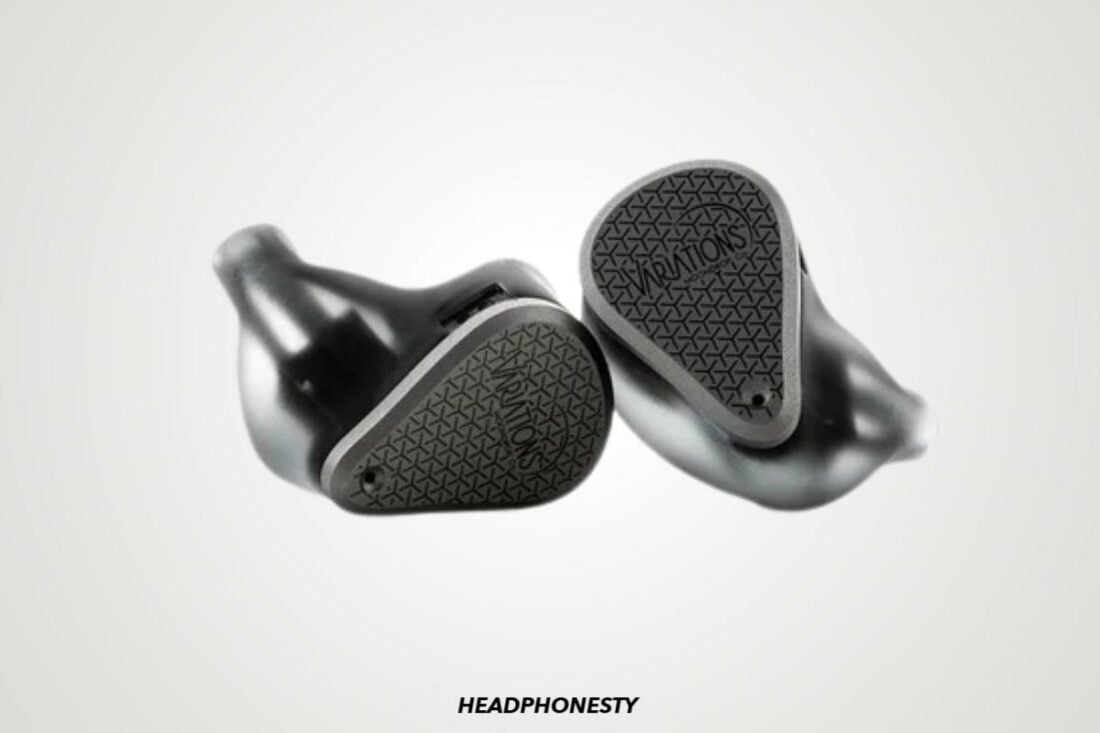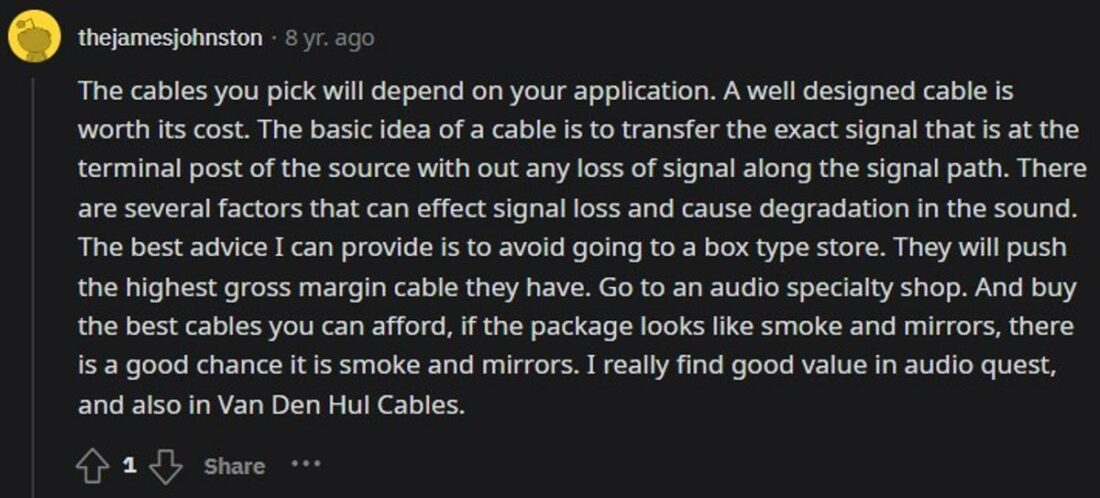Most audiophiles are not happy with him.
After testing for over a month, u/iBLCKNDWTHN claims that the Cadmus 8W cable from Effect Audio noticeably improved the sound of his Moondrop Variations IEMs, in a Reddit post. He describes the audio as sounding better, with “fuller vocals and overall bigger scene”.
This reignites a debate that has long divided audiophiles worldwide about the value (or lack thereof) of ‘expensive’ headphone cables.
A Deeper Look Into the Experiment
The OP detailed his evaluation on the r/headphones subreddit, emphasizing that his judgment was based purely on sound quality, not the aesthetics or price of the cables.
He used the Moondrop Variations IEMs, noting they’re best for dark wave and chill genres but lacking for his preferred heavy metal genre.

“I’m a big fan of metal/deathcore, and planar drivers are so good for it. Variation was an obvious choice… but they have one con – mid bass.
I find them rather good, but not best for metal. It doesn’t change the beautiful moments I’ve had with them… so I was like: next step is cable.” he says.
The OP then proceeded to do A/B testing, which, in this context, involved using two sets of audio cables with his Variations to assess any differences in audio quality.
After a month, he noticed an improvement in the Variations’ sound with the Cadmus 8W, especially when listening to metal.

He initially hoped the Cadmus 8W cable wouldn’t make a significant difference so that he could save money for other high-end IEM purchases. However, the OP concluded that the sound quality improvement was worth the US$300 price tag despite admitting that some might be due to the placebo effect.
Mind-Over-Matter: The Community’s Stance
Community responses varied, but most did not agree with the OP’s insights.

Users like u/LTHardcase, pointed out a bias in consistently positive reviews for expensive cables.
“You’d think at least one bad cable would be made by someone cheaply cashing in on what should truly be ‘snake oil,’ but nope, they post a description of what it’s made of that no one disassembles to fact check, slap a price on it, and the buyers notice the difference for the better.
If you can’t spot the bias, it’s because you’ve drowned in it already,” he says.
Some also mentioned that experienced audiophiles should actively discourage misleading marketing and dissuade newcomers from overspending on audio cables.

In response, the OP explained that his interest in the effect of audio cables stems from enjoyment, not cost. He also accepted the placebo effect since it improved his listening experience.
However, there are also a few who agree that cables can make a difference in sound.
Do Expensive Audio Cables Make a Difference?

The discussion around audio cables is familiar in the audiophile community.
Proponents claim that better cables can make a difference. High-quality materials and construction can reduce signal interference and degradation, potentially leading to clearer, more detailed sound.

Critics, however, argue that limited scientific evidence supports noticeable enhancements in sound quality. Others suggest the listener’s bias overshadows any subtle differences.
In a different post on the r/audiophile subreddit, one user said:
“There is no way to actually make a fair comparison between the cables after you took all that time to unhook the old one, plug in the new one, and fire up another song.
Our brain is simply not capable of making objective comparisons on a fresh sound compared to one stored in our memory, and unless you are instantly switching back and forth you are relying on your stored memories.”
The placebo effect further skews audio quality perceptions. For example, listeners may think pricier cables improve sound, hearing clarity, or richness without measurable enhancements. As such, blind testing is crucial for unbiased assessment of audio equipment.
Due to its subjective nature, the debate on audio quality and cables remains unresolved. However, it prompts a deeper exploration of what makes a listening experience meaningful to each individual, whether improvements are real or perceived.
